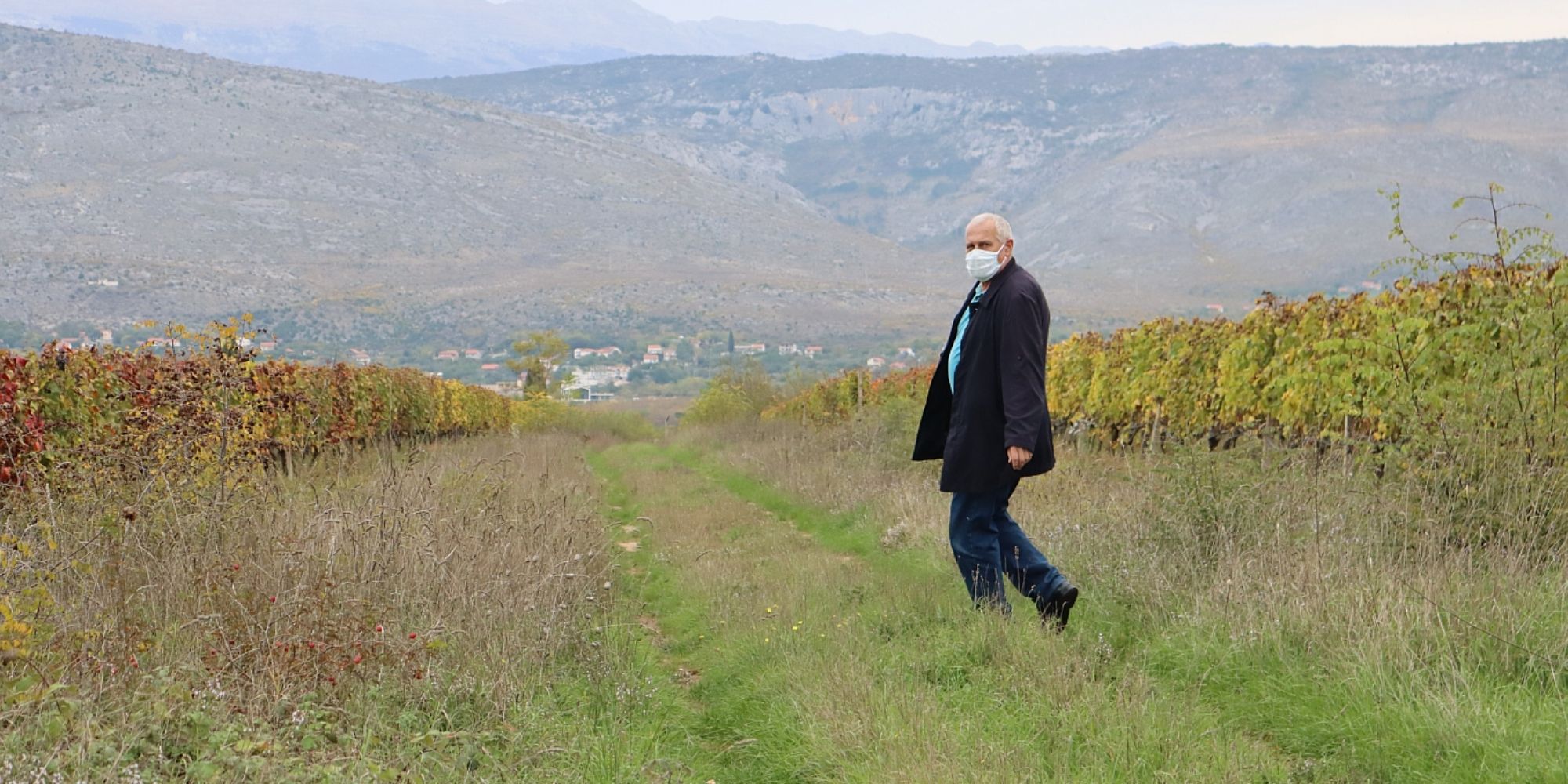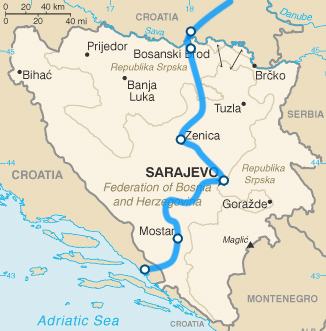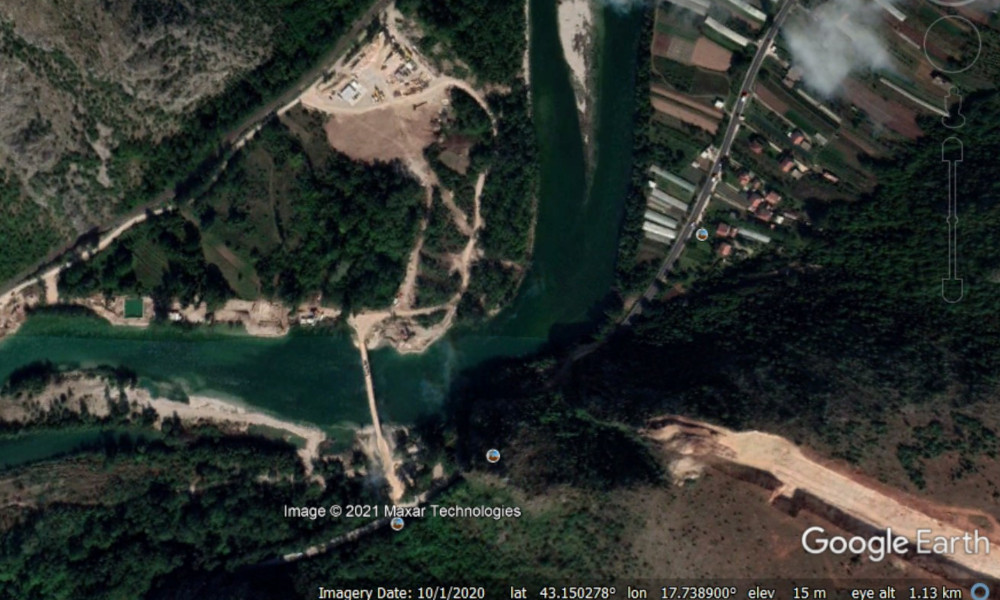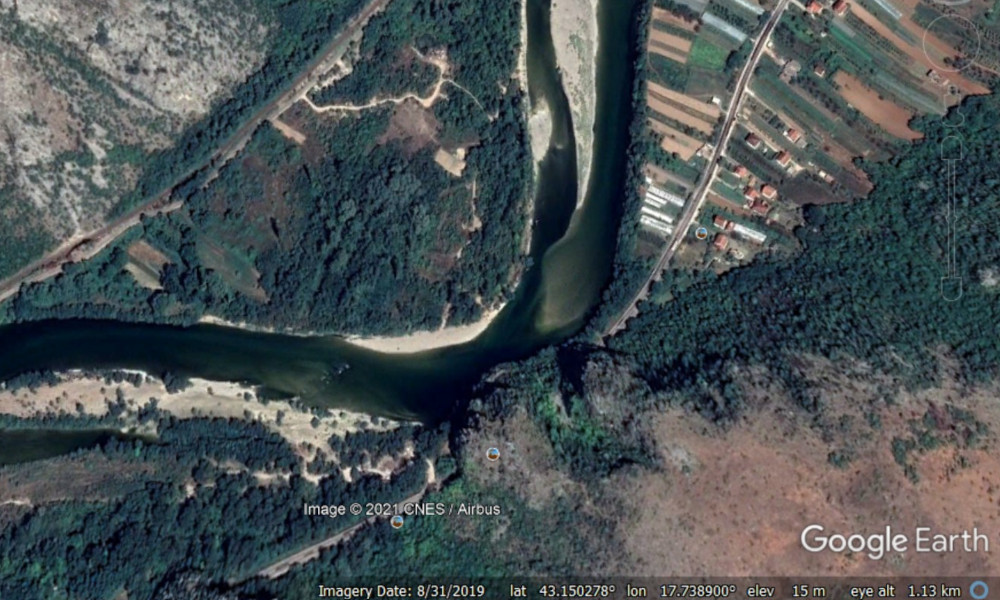Corridor Vc motorway, Bosnia and Herzegovina
The pan-European Corridor Vc is planned to run for 330 km through Bosnia and Herzegovina. Serious concerns about environmental impacts, land expropriation, and threats to cultural heritage have been raised along the motorway route, mostly between Sarajevo and the southern border with Croatia.

Stay informed
We closely follow international public finance and bring critical updates from the ground.
Key facts
Projected cost: EUR 4.5 billion – so far, not including the Prenj tunnel
Project promoter: JP Autoceste
International financing:
As of early 2024, the Corridor Vc in Bosnia and Herzegovina has received more than EUR 3 billion in loans and grants from the European Union’s Western Balkans Investment Framework (WBIF), the European Investment Bank (EIB) and the European Bank for Reconstruction and Development (EBRD). More details can be found here.
The controversial Mostar – Počitelj section is being financed as follows:
- Mostar North – Mostar South (15km) | EBRD | EUR 220 million
- Mostar South – Tunnel Kvanj (8.6km) | EBRD | EUR 60 million
- Mostar South – Tunnel Kvanj (9.2 km) | WBIF | EUR 31.4 million grant
- Tunnel Kvanj – Buna | EIB | EUR 100 million (though its website only says Mostar South – Počitelj)
- Buna – Počitelj (7.2km) | EBRD | amount unknown
- Tunnel Kvanj – Buna (5.2 km) | WBIF | EUR 24 million grant
Both the EIB and EBRD are also considering financing the controversial 11 km Prenj tunnel section.
Key issues
The decision-making process on the current route of the Mostar-Pocitelj section was seriously flawed: Read more
War returnees stand to be particularly impacted by the current routing, and have mobilised to protest it: Read More
Planned river crossings threaten rare and endangered species: Read more
The Prenj tunnel threatens a planned National Park: Read more
High time for the project’s financiers to ensure it actually meets their standards: Read more
Background
The pan-European Corridor Vc is intended to connect the Adriatic port of Ploče in Croatia with Budapest in Hungary, via Bosnia and Herzegovina (BiH). The BiH Section falls mostly within the Federation of Bosnia and Herzegovina (FBiH) entity – where the project promoter is the public company JP Autoceste – with a short section in Republika Srpska.
Since 2007, the EIB and EBRD have signed numerous loans for the Corridor, which as of early 2024 amount to almost EUR 2.5 billion. The European Union has also provided grants amounting to nearly EUR 870 million through the WBIF.
These figures do not include the Prenj tunnel, expected to cost at least EUR 600 million.

Parts of the route are causing intense controversy, particularly in the area south of Mostar. The originally planned route, proposed in 2006-2007 along the Neretva valley, passed through agricultural land and near to the tentative World Heritage site at Blagaj. It met with opposition from local people and in 2011 a new proposal was put forward to move the routing up onto the Podveležje plateau.
In 2015, JP Autoceste decided it didn’t find this route suitable after all, and started planning a new one, back in the valley but with a somewhat changed route, sparking a new round of local opposition.
Why JP Autoceste decided to move the route back into the valley remains a mystery. The Podveležje ridge route avoids inhabited areas and entails no river crossings, while the currently planned valley route runs through villages, agricultural land and tourist sites. It also crosses two highly sensitive rivers with rich biodiversity – the Buna and Bunica.
No public consultation took place on this part of the route before the relevant changes were approved to the project-level spatial plan in 2017, thus breaching FBiH legislation and depriving local people of the chance to have a say in the routing of the motorway.
In autumn 2020, when the environmental impact assessment was presented, locals were presented with a fait accompli, rendering the consultation largely meaningless.
The official explanation is that multicriterial analyses for the project showed the current valley route as cheaper than the ridge one. But it is not clear what was wrong with the ridge route in the first place. Why did JP Autoceste decide to incur the wrath of people living in the valley by proposing another lowland route?
Even the 2016 multicriterial analysis states that based on spatial-economic and spatial-ecological criteria, the ridge route is more advantageous. It seems unlikely that the cost difference is so large as to justify years of court cases and delays associated with the valley route.
Despite warnings from local people, supported by Bankwatch, about breaches of the Bank’s policies, the EBRD approved financing for this section in February 2021. In December 2023, the Bank also approved a EUR 200 million loan for the 15 km North Mostar – South Mostar section running through the edges of the city, which would also limit future route choices for the sections on either side of it.
After a complaint by local people, in early 2024 the EBRD’s accountability mechanism, IPAM, confirmed that the route selection process had not been carried out in compliance with the EBRD’s Environmental and Social Policy and recommended undertaking a new alternative alignment analysis, together with a proper environmental and social assessment.
It now remains to be seen whether the FBiH authorities will do so, this time with public consultations and transparent alternatives. Meanwhile, another IPAM case is pending.
War returnees once again face insecurity
Building the motorway on the currently planned route in the Neretva valley would impact the property and livelihoods of war returnees, including Serbs who are a minority in the area. As well as the stress caused to individual households who have rebuilt their lives there in the last two decades, this has resulted in concerns about divisive and politicised decisions that damage peacebuilding efforts and against the Dayton Peace Agreement.
According to the EBRD’s safeguards policy, minorities should be treated as vulnerable groups that require additional safeguards and consultations. However, the 2020 environmental and social impact assessment fails to provide either detailed analysis or adequate mitigation measures.
IPAM’s findings confirmed that the EBRD had breached its standards on vulnerable groups and that the Bank had ‘failed to internalise into its (…) decision-making process for this project, the relevance of the local social context. This has led to the acceptance of a decision that would disproportionately impact a vulnerable group and therefore exacerbate the local conflict.’
Moreover, affected landowners alleged that JP Autoceste employees have trespassed on their land, setting up markers for the motorway routing without even consulting them.
Critical habitats under threat
The rivers Buna and Bunica are what the EBRD’s environmental and social policy calls ‘critical habitats’, due to the presence of rare and endangered species such as stone crayfish, softmouthed trout and eels. In particular, the part of the Buna where the motorway bridge would cross the river is a key spawning spot for the globally endangered softmouthed trout, Salmo obtusirostris.
The EBRD’s rules state that construction in a critical habitat is not allowed unless a number of criteria have been satisfied. The first condition is that there is no viable alternative. As explained above, this is not the case. The ridge route is viable, and the decision to abandon it has never been properly justified.
The EBRD is trying to bend its own rules by claiming that construction will not take place in a critical habitat as no construction will take place in the riverbed. But anyone who has ever been near a construction site in southeast Europe knows that there is zero chance of this being enforced. Whether it is planned or not, damage to the river bank during construction is inevitable, and noise and vibrations even more so.
One does not need to look far to find an example. At nearby Počitelj, a section of the Corridor Vc has already been built. Between August 2019 and January 2020, not only was a temporary bridge built over the Neretva, with all the noise and vibration this brings, but the northern riverbank was damaged, despite not being on the main construction site.
Numerous other deficiencies in the environmental assessment, including a lack of updated baseline data, lack of information on gravel extraction, and inaccessibility of much of the project area to field researchers, together with a reliance on unenforceable mitigation measures, mean that the impacts of the construction have almost certainly been underestimated.
This conclusion was also supported by IPAM, which found that ‘the assessment process has not fully identified and characterised the risks and impacts of the Project on biodiversity.’
Prenj tunnel threatens planned National Park
A section of the Corridor Vc southwest of Sarajevo is planned to go through an 11 km tunnel through the Prenj mountain, a stunning and unspoilt area. For decades, a National Park has been planned there, but has so far not been established.
While the tunnel would bypass some parts of the mountain, it would likely disrupt underground water flows and the approaches to the tunnel would seriously damage this wild landscape.
This will be the most costly section of an already very expensive project, and is also likely to become an environmental flashpoint, likely leading to further delays and cost increases.
Similarly to the section south of Mostar, the route across Prenj has been subject to route changes which were not consulted with the public during the spatial planning phase. And during the environmental impact assessment process in 2023, civil society organisations were once again presented with a fait accompli, as the Ministry responsible for the process refused to take any comments on the routing into account.
What now for the EBRD and EIB?
In order to meet their environmental and social standards, for the Mostar South – Kvanj tunnel section, the EBRD and the EIB urgently need to require JP Autoceste to prepare detailed analyses of the ridge road from 2011, including a full and meaningful consultation with affected people both on the overall route alternatives and on the specific impacts of the different options.
The banks must also require JP Autoceste to examine and publicly consult alternatives for the Prenj section. Failure to resolve this issue now will only lead to problems later.
Latest news
Bosnia and Herzegovina: Environmental and social study for Prenj motorway tunnel needs to tackle the elephants in the room
Blog entry | 2 July, 2024The environmental and social impact assessment for the planned Prenj tunnel on the Corridor Vc motorway provides a wealth of details on some issues, but fundamental questions remain, particularly on the Bijela canyon Emerald site near Konjic and the Podgorani area near Mostar.
Read moreBosnia and Herzegovina: Motorway-affected residents submit complaint to the UN
Press release | 24 June, 2024A group of people whose land and houses are threatened by the EU-funded planned Corridor Vc (1) motorway south of Mostar in Bosnia and Herzegovina have submitted a complaint to the United Nations Human Rights Council (2).
Read moreOpen days on the Corridor Vc Prenj tunnel: a promising new public engagement tool?
Blog entry | 14 June, 2024Last week, JP Autoceste and the EBRD held three open days on the planned Prenj tunnel, part of the 330-kilometre Corridor Vc motorway in Bosnia and Herzegovina (BiH). Bankwatch went along to see what this new format offers and how it works in practice.
Read moreRelated publications
Corridor Vc in Bosnia and Herzegovina: Environmental and social impacts can no longer be ignored
Briefing | 17 October, 2025 | Download PDFThe EU’s flagship infrastructure project in Bosnia and Herzegovina – the 330-kilometre Corridor Vc motorway – now stands at a critical crossroads. To date, only one-third of the corridor has been completed, financed through more than EUR 3 billion in loans and grants from the EU, the EIB, and the EBRD.
Outcome undisclosed: EIB Group Complaints Mechanism leaves Corridor Vc complainants in the dark
Case study | 21 March, 2025 | Download PDFThis case study summarises the circumstances of the complaints against the project, the conclusions of the EIB Complaints Mechanism, the outcomes and recommendations for the next review of the EIB Group Complaints Mechanism Policy.
The Corridor Vc motorway in Bosnia and Herzegovina: A decisive test for EU standards
Report | 5 April, 2024 | Download PDFBased on a March 2024 site visit, this report examines two planned sections of the motorway– from Mostar South to the Kvanj Tunnel and from Konjic to Mostar, through the iconic Prenj mountain. It presents updated findings and underlines that it is crucial for the European Commission, EIB and EBRD to ensure that the route south of Mostar and via Prenj is re-examined and publicly consulted if they want to avoid many more years of delay.


